Pipe dreams: Oscar Tuazon emulates LA’s aqueducts in his latest body of work
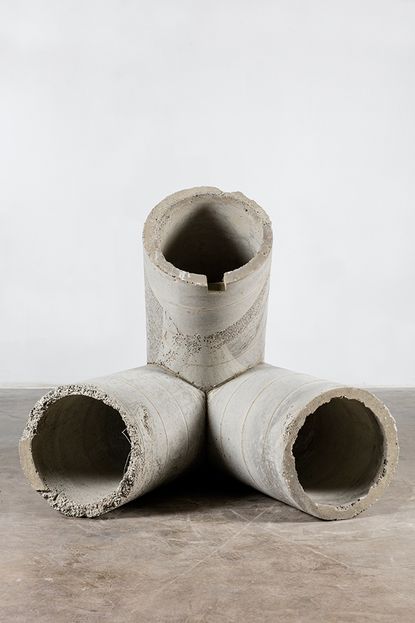
Who would have thought a story about an aqueduct could be so salacious? Riddled with corruption, intrigue and drama, the story of the first aqueduct in Los Angeles – completed in 1913 and led by William Mulholland – is well known, thanks to Roman Polanski’s 1974 film Chinatown. Now it has piqued the interest of architect/artist Oscar Tuazon, who is revisiting the 233 mile-long pipe for an exhibition at the Hammer Museum.
Comprising four elements spread across different areas of the museum, Tuazon has created concrete and aluminium sculptures inspired by a monument to Mullholland that Tuazon came across in the neighbourhood of Los Feliz.
‘Mulholland was a strange figure. His aqueduct is the infrastructure that created Los Angeles, a transformative piece of geo-engineering,' says Tuazon. 'It's a massive earth work; you can trace its path on Google Earth like a line drawing. But Mulholland was also responsible for the worst civic engineering disaster in California history: the collapse of the St Francis dam, which flooded the valley with 12 billion gallons of water and killed hundreds of people. The central feature of the Muholland memorial park is a large Art Deco fountain. Placed in front of the fountain is a piece of the aqueduct, an empty section of pipe. A portrait of Los Angeles.'
He continues: ‘I had started thinking of a pipe as a kind of space – not quite architecture because it doesn't have a flat floor – but at the scale of a room. I was building crude models of pipes in the studio, imagining them as apertures, viewing devices that could be placed in a landscape, ways of making connections between places. Plumbing is pure infrastructure. Water pipes, oil pipelines, plumbing – the Hammer is in the former Occidental Petroleum building (now owned by UCLA), so these are not metaphorical connections but they are usually invisible.’
In Southern California, water issues continue to be contentious, and those connections are quickly made with the opposite extremes being experienced on the East Coast and beyond, to the environmental crisis beyond that around the world. Tuazon’s work often dismantles – literally and conceptually – the idea of a stable, safe domestic space. (In a recent 2015 work, he crushed a whole freestanding building as a performance at Paradise Garage in Venice, California.)
His new site-specific work unavoidably articulates our troubled relationship with our surroundings and questions the impact of our industrial constructions on the environment. But it isn’t simply a cynical critique. His approach to architecture is somehow hopeful. He says, ‘An artwork can create spatial situations that don't exist anywhere else, things that would literally be illegal to build as architecture. There are very real practical benefits to this kind of privilege, I try to take advantage of that and build things that should not be built.’
Recently Tuazon, originally from Seattle, acquired some land near the Washington coast, where he is constructing an artwork that will also function as a home. Much like his work at the Hammer, water is a literal and conceptual source, and Tuazon’s approach is largely an attempt to reharmonise a relationship to the environment, practically and politically. ‘It's a house with one room, on the Hoh River in the Olympic rainforest. It is surrounded by water, it rains constantly, and that defines the house. One of the first things we did was a plumbing project – a rainwater collection tank and a filtration system. It was a good way to understand what water does. Water is the best material for making sculpture, it has a mind of its own, it's alive.’

The artist explains: ‘I was building crude models of pipes in the studio, imagining them as apertures, viewing devices that could be placed in a landscape, ways of making connections between places.' Pictured: Natural Man, 2015
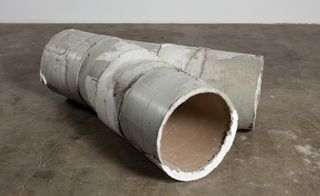
The new site-specific work expresses our troubled relationship with our surroundings and questions the impact of our industrial constructions on the environment. Pictured: Pipe Prototype, 2015
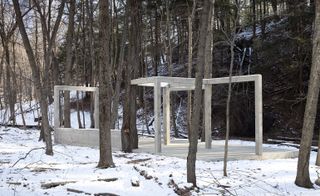
Tuazon says, ‘An artwork can create spatial situations that don't exist anywhere else, things that would literally be illegal to build as architecture. There are very real practical benefits to this kind of privilege, I try to take advantage of that and build things that should not be built.' Pictured: An Error, 2011, installation view

Process view of Sun Riot (scale model), 2015
INFORMATION
'Hammer Projects: Oscar Tuazon' is now on view until 15 May
Photography courtesy of the artist and Hammer Museum
ADDRESS
Hamme Museum
10899 Wilshire Boulevard
Los Angeles, California
Wallpaper* Newsletter
Receive our daily digest of inspiration, escapism and design stories from around the world direct to your inbox
Charlotte Jansen is a journalist and the author of two books on photography, Girl on Girl (2017) and Photography Now (2021). She is commissioning editor at Elephant magazine and has written on contemporary art and culture for The Guardian, the Financial Times, ELLE, the British Journal of Photography, Frieze and Artsy. Jansen is also presenter of Dior Talks podcast series, The Female Gaze.
-
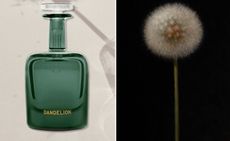 Perfumer H has bottled the scent of dandelions blowing in the wind
Perfumer H has bottled the scent of dandelions blowing in the windPerfumer H has debuted a new fragrance for spring, called Dandelion. Lyn Harris tells Wallpaper* about the process of its creation
By Hannah Tindle Published
-
 The best fashion moments at Milan Design Week 2024
The best fashion moments at Milan Design Week 2024Scarlett Conlon discovers the moments fashion met design at Salone del Mobile and Milan Design Week 2024, as Loewe, Hermès, Bottega Veneta, Prada and more staged intriguing presentations and launches across the city
By Scarlett Conlon Published
-
 LEVC’s L380 is a truly magnificent minivan
LEVC’s L380 is a truly magnificent minivanThe London Electric Vehicle Company’s L380, is a magnificent minivan designed for upscale long-distance travel, as the maker of the London Taxi branches out into all-purpose EVs
By Jonathan Bell Published
-
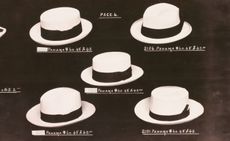 The Met’s ‘The Real Thing: Unpacking Product Photography’ dissects the avant-garde in early advertising
The Met’s ‘The Real Thing: Unpacking Product Photography’ dissects the avant-garde in early advertisingA new exhibition at The Metropolitan Museum of Art in New York explores the role of product photography and advertising in shaping the visual language of modernism
By Zoe Whitfield Published
-
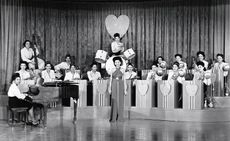 Detroit Institute of Arts celebrates Black cinema
Detroit Institute of Arts celebrates Black cinema‘Regeneration: Black Cinema 1898-1971’ at the Detroit Institute of Arts (DIA) brings lost or forgotten films, filmmakers and performers to a contemporary audience
By Anne Soward Published
-
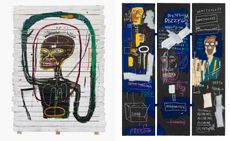 Jean-Michel Basquiat’s LA-made work goes on show at Gagosian
Jean-Michel Basquiat’s LA-made work goes on show at Gagosian‘Made on Market Street’ at Gagosian in Beverly Hills is the first show to present works made by the young artist between 1982 and 1984
By Hunter Drohojowska-Philp Published
-
 BLUM marks 30 years of Japanese contemporary art in America
BLUM marks 30 years of Japanese contemporary art in AmericaBLUM will take ‘Thirty Years: Written with a Splash of Blood’ to its New York space in September 2024, continuing its celebration of Japanese contemporary art in America
By Timothy Anscombe-Bell Published
-
 Todd Gray’s sculptural photography collages defy dimension, linearity and narrative
Todd Gray’s sculptural photography collages defy dimension, linearity and narrativeIn Todd Gray’s New York exhibition, he revisits his 40-year archive, fragmented into elaborated frames that open doors for new readings
By Osman Can Yerebakan Published
-
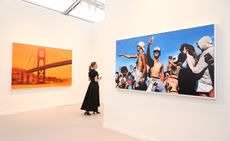 Frieze LA 2024 guide: the art, gossip and buzz
Frieze LA 2024 guide: the art, gossip and buzzOur Frieze LA 2024 guide includes everything you need to know and see in and around the fair
By Renée Reizman Published
-
 What happened when Spike Jonze met Björk
What happened when Spike Jonze met BjörkSpike Jonze’s ‘The Day I Met Björk’, curated by Humberto Leon, is at Arroz & Fun in Los Angeles and accompanied by a free, downloadable zine from WeTransfer
By Hannah Silver Published
-
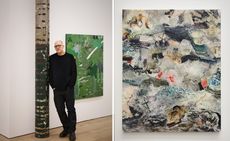 New York artist Christopher Astley showcases an alternative natural world
New York artist Christopher Astley showcases an alternative natural worldAt Martos Gallery in New York, Christopher Astley’s paintings evoke an alternative natural world and the chaos of warfare (until 16 March 2024)
By Tianna Williams Published